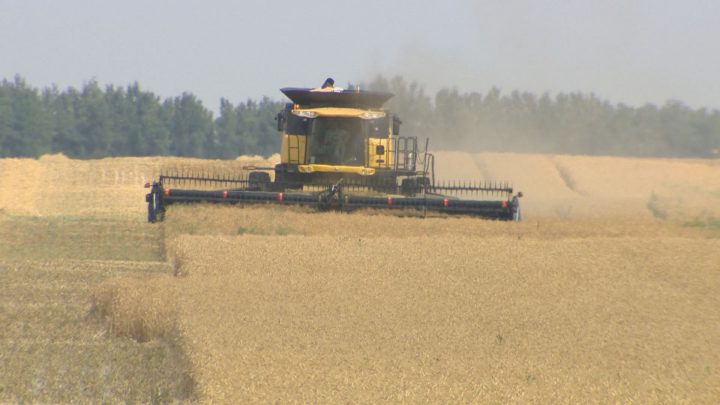Farmers in Saskatchewan are making headway on harvesting the 2020 crop.

Saskatchewan Agriculture said 15 per cent of the crop is now combined, up from four per cent a week ago and ahead of the five-year average of 12 per cent for this time of year.
The crop report, released Thursday, said another 16 per cent is swathed or ready to straight-cut, just behind the five-year average of 17 per cent.
Harvest is furthest advanced in the southwest region, with 31 per cent combined. The southeast region is reporting 19 per cent combined, west-central 12 per cent, east-central nine per cent, northeast four per cent and northwest two per cent.
According to Sask Ag, 89 per cent of fall rye, 82 per cent of winter wheat, 59 per cent of lentils, 56 per cent of field peas, 20 per cent of barley, 15 per cent of durum, nine per cent of oats, five per cent of spring wheat and two per cent of canola is combined.

Get daily National news
An additional 16 per cent of canola has been swathed or is ready to straight-cut, the report stated.
Most regions received minimal precipitation in the past week and that, combined with the heat, continued to deplete moisture conditions, the report stated.
The exceptions were isolated regions in the east and parts of the northwest region, which reported more than 25 millimetres of rain.
Cropland topsoil moisture is rated one per cent surplus, 37 per cent adequate, 42 per cent short and 20 per cent very short.
Hay and pasture land topsoil moisture are rated one per cent surplus, 27 per cent adequate, 41 per cent short and 31 per cent very short.
Crop damage in the past week was attributed to the lack of moisture, heat, wind and insects.
Localized flooding also contributed to crop damage in the northwest region.
Sask Ag said there continue to be reports of premature ripening and heat stress in both crops and pastures.







Comments